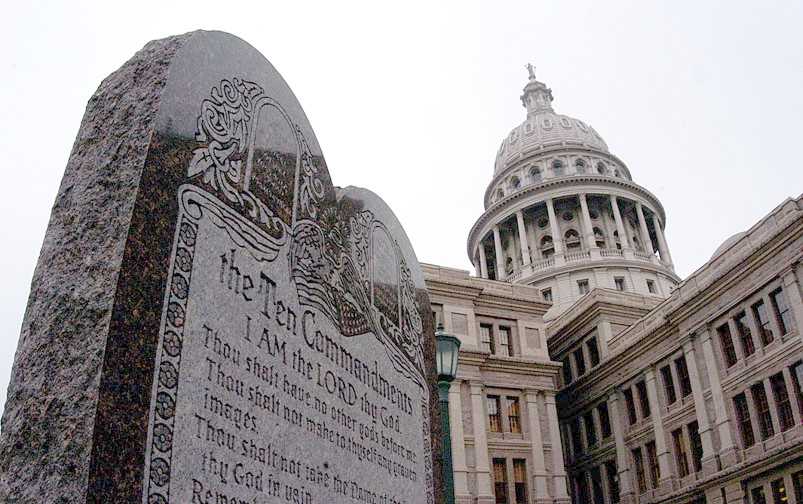Read Michael Coogan’s post on the politics of the April 27 canonization of John XXIII and John Paul II

Despite the Ten Commandments’ enduring power as either the purported word of God or a document of great historical significance, few would support following a literal interpretation of them to the letter. One could read in the 10th commandment, for example, a perception of women as the property of men.
You should not scheme against your neighbor’s house; you should not scheme against your neighbor’s wife, or his male slave or his female slave, or his ox or his donkey, or anything that is your neighbor’s.
(The 10th Commandment as written in Exodus 20:17)
How do we reconcile the Ten Commandments’ endorsement of secular and universal values with their affirmation of those that are no longer defensible?
In The Ten Commandments: A Short History of an Ancient Text, Michael Coogan traces the development of the Ten Commandments as a text and considers their differing interpretations throughout history. Opening with a reproduction of the three biblical versions of the Ten Commandments and concluding with recommendations on how we should honor them today, he ultimately challenges our perception of the Ten Commandments as infallible and reveals literal interpretations of their words as unhistorical.
At the end of “Idols and Images,” the first chapter of the book, Coogan poses questions integral to placing the Ten Commandments within a modern context and introduces his framework for analyzing their centrality within contemporary American society:
Commercial, constitutional, and textual matters aside, there are more important issues: Is this ancient Israelite set of laws an appropriate, if controversial, American symbol? Are its values so easily transferable to a modern context? Before we can decide on the relevance for our time of a text is several thousand years old, we should determine what it meant in its original setting, to its first audiences. To do so we will need to consider the Ten Commandments in their historical and literary contexts in the Bible, as well as their broader ancient Near Eastern environment. We will see that the Ten Commandments are the stipulations of the contract or covenant between God and Israel, a central biblical concept that is also elucidated by other types of contracts in biblical and ancient Near Eastern law. Moreover, the Ten Commandments come from a culture different in many ways from ours. Ancient biblical society was overwhelmingly patriarchal, one in which women were essentially property and slavery was a given. The Ten Commandments reflect those values –but should they still be authoritative, even if contained in an apparently divinely given code?
[…]
… continuing up to the present, it is clear that the prescriptions and prohibitions of the Ten Commandments were not always observed literally, and various subgroups within Judaism and Christianity differed, and continue to differ, about how to interpret and apply them. Is making an image of God – or of any divine, human, or animal form – allowed, or not? Is the Sabbath to be observed on Saturday or Sunday? Are women hierarchically subordinate to men, and may people own slaves? Most important, should the Ten Commandments still be an authoritative text?
Coogan treats seriously the Decalogue as a historical moment whose teachings have informed the essence of religious practice for centuries. While he performs textual and historical analysis, he simultaneously argues that this document need not be elevated against others in the public square today.



 Burning With Passion: Selected Poems from Catullus
Burning With Passion: Selected Poems from Catullus